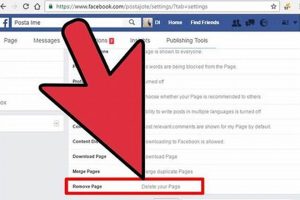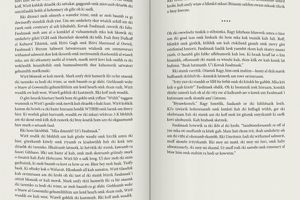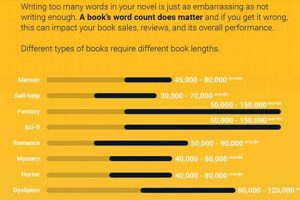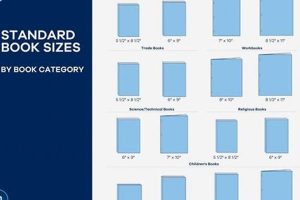The quantity of written content on a single leaf of a bound publication varies significantly. This count is influenced by factors such as font size, margin width, leading (the space between lines), and the overall trim size of the book. For example, a compact paperback novel will generally contain a higher density of text compared to a large-format art book.
Understanding this variability is crucial for estimating reading time, calculating book length during the manuscript submission process, and informing design choices in publishing. Historically, standardization attempts have been made, but ultimately, the aesthetic and practical considerations of each individual project dictate the final word count per leaf. The count can also impact production cost, influencing paper stock choices and printing methods.
The subsequent sections will delve into the specific parameters that affect this measurement, providing a clearer understanding of the range of potential values and methods for estimating the amount of text contained within a typical book’s leaf.
Estimating Text Density on a Book Leaf
The following are guidelines for approximating the number of words found on a single page in a published book.
Tip 1: Analyze Font Size: A smaller typeface, such as 10-point, will invariably allow for more characters and therefore words per line and page compared to a larger font like 12-point. Consider the font family as well; condensed fonts offer greater text density.
Tip 2: Evaluate Margin Width: Narrower margins increase the printable area, thus accommodating more words. Examine the top, bottom, and side margins. A generous margin indicates less textual content.
Tip 3: Assess Leading (Line Spacing): Tighter line spacing results in more lines per page and a higher word count. Conversely, increased leading creates a more open, less dense appearance, reducing the word quantity.
Tip 4: Determine Trim Size: The overall dimensions of the page significantly impact the number of words it can contain. Larger page sizes inherently accommodate more text than smaller, more compact formats.
Tip 5: Account for Visual Elements: Pages with illustrations, diagrams, or other non-textual elements will naturally have fewer words than pages dedicated solely to text. Consider the proportion of text versus graphics.
Tip 6: Consider Paragraph Indentation and Spacing: Indented paragraphs with extra space between them will take up more vertical space, leading to fewer lines and words per page. Look at the consistency of paragraph formatting throughout the book.
Tip 7: Note Justification: Fully justified text, while potentially visually appealing, can alter word spacing slightly and subtly impact the overall word count compared to left-aligned text.
Careful consideration of these elements provides a method to approximate the textual content found on any given book page.
The concluding section will address how these estimations can be valuable in various contexts.
1. Font Size Impact
Font size is a primary determinant of the textual density found on any book page. It directly influences the number of characters that can be fitted within a given line and the total number of lines accommodated on the page. Consequently, it has a significant and predictable effect on the overall quantity of words per leaf.
- Point Size and Character Density
Point size, the standard unit for measuring font size, dictates the physical height and width of each character. A smaller point size (e.g., 10pt) allows for a greater number of characters per line and more lines per page compared to a larger point size (e.g., 12pt). This relationship is consistent across various font families. A technical manual, for instance, may employ a smaller point size to maximize information density, while a novel might use a larger, more readable size.
- Font Family Variations
While point size provides a general measure, different font families exhibit variations in character width and height, even at the same point size. A condensed font family, characterized by narrower characters, will typically allow for more words per line than a wider font family. This is particularly relevant in designs aiming to optimize space utilization. A newspaper, often utilizing condensed fonts, exemplifies this application.
- Readability Considerations
The selection of font size is not solely based on maximizing word count. Readability is a paramount concern. Excessively small fonts, while increasing density, can strain the reader’s eyes and reduce comprehension. Publishers must balance the desire for a compact book with the need to ensure comfortable reading. Books targeted at younger audiences, for example, generally prioritize readability with larger fonts.
- Impact on Page Layout and Design
Font size directly affects page layout, impacting line spacing, margin sizes, and overall aesthetic appeal. Smaller font sizes may necessitate tighter line spacing, which can affect readability if not carefully managed. The choice of font size is thus a crucial element in the book design process, influencing not just word count but also the overall reading experience. An art book with extensive imagery, for example, will use larger font sizes for balance with the visual elements.
In summary, font size plays a pivotal role in determining textual density. While smaller font sizes increase the potential word count, careful consideration must be given to font family variations, readability, and the overall design context. Ultimately, the optimal font size represents a balance between information density and reader experience.
2. Margin Width Effects
Margin width significantly impacts the available space for textual content on a book page. The dimensions of the margins directly constrain the area within which text can be placed, thereby influencing the overall word count achievable per page. This effect necessitates careful consideration during the book design process.
- Margin Size and Printable Area
Wider margins reduce the printable area, limiting the number of lines and characters per line that can be accommodated. Conversely, narrower margins expand the printable area, allowing for increased textual density. This relationship is inversely proportional. A book designed with extensive annotations may employ wider margins, reducing the available space for the main text.
- Impact on Visual Appeal and Readability
Margins contribute significantly to the visual appeal and readability of a book. Generous margins can create a sense of spaciousness and improve the reader’s ability to focus on the text. However, excessively wide margins can reduce the perceived value of the book and increase production costs. A trade paperback typically balances margin size with readability considerations.
- Influence on Binding and Production
Margin width also affects the binding process. Adequate inner margins (the margins closest to the spine) are crucial for ensuring that the text remains legible after the book is bound. Insufficient inner margins can result in text being obscured or difficult to read. This is especially important for books with tight bindings. A textbook, frequently used and often photocopied, requires robust inner margins.
- Aesthetic and Genre Conventions
Margin widths are often dictated by aesthetic preferences and genre conventions. Certain genres, such as poetry or art books, may employ unconventional margin sizes to enhance the visual presentation. The choice of margin width thus becomes an integral part of the overall design strategy. A coffee table book featuring large images may use minimal margins.
In conclusion, margin width exerts a substantial influence on the number of words found on a book page. Its effect is intertwined with considerations of visual appeal, readability, binding constraints, and genre conventions. Publishers must carefully balance these factors to optimize both the textual content and the overall reading experience.
3. Leading Space Influence
Leading, the vertical space between lines of text, is a critical factor impacting the textual density on a book page, directly affecting the number of words that can be accommodated. Tighter leading allows for more lines of text on a page, thus increasing the overall word count. Conversely, increased leading reduces the number of lines, resulting in fewer words per page. This relationship is directly proportional. For instance, legal documents or academic journals often employ stricter leading to maximize the information presented within a limited space. The consequence is a high density of text, potentially demanding closer reader attention. In contrast, novels often utilize generous leading to enhance readability and create a more comfortable reading experience, resulting in a lower word count per page.
The choice of leading is not solely determined by the desire to maximize words. Readability and aesthetic appeal are paramount considerations. Insufficient leading can lead to a cramped and visually unappealing page, hindering comprehension. Conversely, excessive leading can create a disjointed appearance. Publishers carefully balance these factors to optimize both the textual content and the visual layout. Consider a children’s book; larger leading is typically used to accommodate young readers’ developing visual skills, even at the expense of word count. Similarly, books intended for audiences with visual impairments often prioritize increased leading for improved readability.
The impact of leading extends beyond simple word count. It influences the perceived length of a book, the overall cost of printing, and the reader’s engagement with the material. Understanding the influence of leading allows publishers and designers to make informed decisions about page layout, font selection, and overall book design. Ultimately, leading plays a subtle but significant role in the success and readability of any published work, acting as a crucial element in determining “how many words are on a book page”.
4. Trim Size Variation
Trim size, the physical dimensions of a book page after it has been cut, stands as a fundamental determinant influencing the number of words a single page can accommodate. Its variations dictate the overall surface area available for text, profoundly impacting page layout and design choices.
- Surface Area and Word Capacity
A larger trim size inherently provides a greater surface area, allowing for more lines of text and a higher character count per line. Conversely, a smaller trim size necessitates a more condensed layout, potentially requiring smaller fonts or tighter leading to maximize word count. The relationship is directly proportional; for instance, a broadsheet newspaper leverages its large trim size for extensive content coverage.
- Genre Conventions and Standard Formats
Various genres adhere to established trim sizes. Mass-market paperbacks utilize a smaller, more portable format, limiting the number of words per page. Conversely, academic textbooks or art books often employ larger trim sizes to accommodate complex layouts, illustrations, and extensive textual content. These conventions reflect considerations of readability, portability, and aesthetic appeal.
- Impact on Design Elements
The trim size influences the selection of font size, margin widths, and leading. A smaller trim size may necessitate a smaller font and reduced margins to maintain readability. Conversely, a larger trim size allows for greater flexibility in these design elements. This interplay between trim size and design choices is critical for achieving a balanced and visually appealing page layout. A coffee table book, for example, relies on its larger trim size to showcase high-resolution images alongside complementary text.
- Economic and Production Factors
Trim size impacts production costs. Standard trim sizes often result in more efficient paper utilization and reduced waste. Non-standard sizes may increase paper costs and complicate the printing and binding processes. Publishers must balance aesthetic and design considerations with economic realities when selecting a trim size. A limited-edition, high-quality art book may justify the increased costs associated with a non-standard trim size.
In summary, trim size exerts a profound influence on the count of words on a page. Its interplay with design elements, genre conventions, and economic factors underscores its significance in the publishing process. Careful consideration of trim size is essential for achieving a balance between textual content, visual appeal, and production efficiency.
5. Image Inclusion Factor
The presence and nature of visual elements within a book significantly influence the quantity of textual content that can be accommodated on a single page. This “Image Inclusion Factor” directly affects “how many words are on a book page”, necessitating careful consideration during the design and layout phases of book production.
- Space Displacement by Images
Images, regardless of their size or type, occupy physical space on the page, thereby reducing the area available for text. The proportion of the page dedicated to images directly correlates with the reduction in word count. A full-page illustration, for example, will leave virtually no space for text, while smaller, integrated images will result in a more moderate decrease in the textual content. Cookbooks and instructional manuals often balance images with text to illustrate procedures or techniques.
- Image-Text Ratio and Readability
The ratio between images and text affects readability and the overall aesthetic appeal of the page. An imbalance, where images overwhelm the text or vice versa, can detract from the reader’s experience. A careful balance ensures that the images complement the text without compromising the textual content’s integrity. Children’s books, educational materials, and design-focused publications carefully manage this ratio to optimize reader engagement.
- Image Placement Strategies
The strategic placement of images can mitigate the reduction in word count. Images can be integrated within the text, positioned in margins, or used as chapter dividers, each affecting the textual density differently. The placement strategy must align with the book’s overall design and content goals. For instance, an academic text might use figures and charts within the text to support arguments, while a photography book may dedicate entire pages to images, with minimal accompanying text.
- Captions and Image Descriptions
While images displace text, they often necessitate accompanying captions or descriptions. These textual elements, although related to the images, contribute to the overall word count. The length and style of captions can vary, depending on the book’s purpose and target audience. Scientific publications require detailed image descriptions, while art books may favor concise captions that highlight artistic aspects.
In conclusion, the incorporation of images into a book page introduces a complex interplay between visual and textual elements. The resulting reduction in “how many words are on a book page” requires careful planning, strategic image placement, and consideration of the overall image-text ratio to maintain readability and achieve the desired aesthetic effect. The choice to include images necessitates a trade-off and careful optimization to balance visual appeal with informational content.
Frequently Asked Questions
The following addresses common inquiries regarding the quantification of words on a typical book page, covering the factors and estimates involved.
Question 1: What constitutes an “average” word count on a book page?
The concept of an “average” is misleading due to significant variability. Word count is influenced by font size, margin width, leading, and trim size. However, a commonly cited range falls between 250 and 500 words for a standard paperback novel page.
Question 2: How does font size impact the total word count on a book page?
Font size exhibits an inverse relationship with word count. Smaller fonts enable greater character density, thus accommodating more words per line and page. Larger fonts reduce character density, leading to fewer words per unit area.
Question 3: Do margin widths have a tangible effect on textual density?
Yes, margin widths directly constrain the printable area. Wider margins decrease the available space for text, resulting in fewer words. Narrower margins expand the printable area, allowing for a higher word count.
Question 4: In what manner does leading affect word count per page?
Leading, or line spacing, inversely affects word count. Tighter leading allows for more lines of text per page, thus increasing the total number of words. Increased leading reduces the number of lines, resulting in fewer words per page.
Question 5: How does the inclusion of images impact the number of words on a typical book page?
Images displace text, thereby reducing the available space for words. The proportion of the page occupied by images directly correlates with the decrease in textual content. Pages with extensive imagery will exhibit a lower word count.
Question 6: Is there a standardized method for calculating textual density prior to book production?
While no universally adopted standard exists, publishers often employ character counts and manuscript analysis software to estimate the approximate length of a book based on these parameters, offering an understanding of “how many words are on a book page”.
In summary, estimating the text on a book page relies on numerous variables. These answers are intended to provide a general understanding of these factors.
Please continue to the concluding section for a synthesis of these insights.
Conclusion
The exploration of “how many words are on a book page” reveals a complex interplay of factors influencing textual density. Font size, margin width, leading, trim size, and image inclusion collectively determine the final word count per leaf. Variability across genres and design choices renders a single, universally applicable number elusive. Precise estimation requires considering all these parameters, highlighting the nuanced nature of book design and production. Ignoring these factors can lead to inaccurate estimations of reading time, production costs, and overall book length.
Understanding these variables is crucial for publishers, designers, and readers alike. As printing technologies evolve and digital formats gain prominence, a continued awareness of textual density remains essential for creating effective and engaging reading experiences. The future of publishing necessitates a balance between aesthetic considerations and practical constraints, informed by a comprehensive understanding of these influential variables.


![[Guide] How Many Words in a 300-Page Book? + Tips BoneyBooks | Discover Rare Books, Timeless Classics & Modern Reads Online [Guide] How Many Words in a 300-Page Book? + Tips | BoneyBooks | Discover Rare Books, Timeless Classics & Modern Reads Online](https://boneybooks.com/wp-content/uploads/2025/06/th-144-300x200.jpg)




